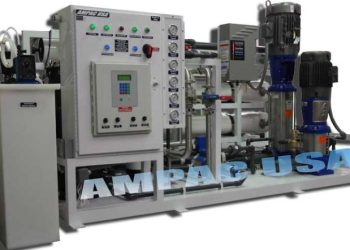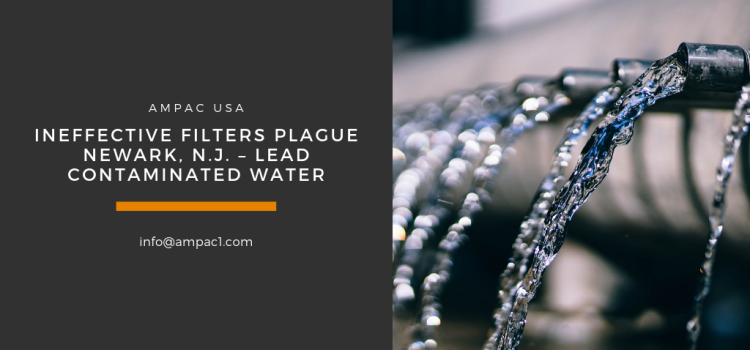Last updated on March 29th, 2025 at 12:29 pm
In an era where water scarcity poses a significant global challenge, the advent of Brackish Water Reverse Osmosis (BWRO) systems has been nothing short of revolutionary. This article explores the workings, benefits, applications, and future prospects of BWRO systems, underscoring their critical role in transforming water purification methods.
Understanding Brackish Water Reverse Osmosis Systems
The Science Behind Reverse Osmosis
Reverse Osmosis (RO) represents a sophisticated filtration process where water is forced through a semi-permeable membrane. This selective membrane allows only water molecules to pass, effectively filtering out salts, minerals, and other impurities.
Specialization for Brackish Water
Brackish water, a blend of freshwater and seawater, poses unique purification challenges due to its varied salinity levels. BWRO systems are engineered to specifically address these challenges, making them a suitable choice for regions where freshwater sources are scarce or compromised.
The Multifaceted Benefits of BWRO Systems
Ensuring Superior Water Quality
BWRO systems excel in improving water quality. They effectively eliminate a broad spectrum of contaminants, including salts and minerals, thus ensuring the safety and suitability of water for consumption and diverse industrial uses.
Economic Advantages
In contrast to conventional desalination methods, BWRO systems are more energy-efficient and cost-effective. This economic advantage makes them a feasible solution for a wide range of communities and industries.
Environmental Implications
Brackish water reverse osmosis systems contribute to sustainable water management by reducing the strain on freshwater resources and lowering the ecological footprint of water purification processes.
Read: Brackish Water Treatment Processes & Solutions
Applications Spanning Various Sectors
Municipal Water Supplies
Municipalities, especially in drought-prone or water-scarce regions, are increasingly adopting BWRO systems to augment their freshwater supplies, ensuring consistent access to potable water for their populations.
Industrial Utilization
Various industries, including pharmaceuticals, power generation, and food and beverage, rely on high-quality water for their operations. BWRO systems meet these stringent requirements, thus playing a critical role in industrial processes.
Agricultural Enhancement
In agriculture, BWRO systems provide a dependable source of quality water for irrigation, contributing to improved crop yields and quality, which is essential for food security.
The Future of Water Purification with BWRO Systems
Technological Innovations
Ongoing research and advancements in RO technology are set to make BWRO systems even more efficient and effective. This progress is key to meeting the evolving demands of water purification.
Broadening Horizons
As BWRO technology becomes more affordable and accessible, its applications are expected to extend to new areas, further transforming the landscape of water purification.
Addressing Global Water Challenges
BWRO systems are instrumental in tackling the pressing issue of water scarcity. By providing a sustainable solution for clean water access, they are vital in the global pursuit of water security.
Read: The Global Perspective: How Commercial RO is Addressing Water Scarcity Challenges
The Global Impact of BWRO Systems
Water Scarcity Solutions
With water scarcity affecting billions globally, BWRO systems offer a tangible solution. They enable the utilization of brackish water sources, which are more abundant than freshwater but underutilized due to their salinity.
Meeting the Sustainable Development Goals (SDGs)
Access to clean water is a key component of the United Nations’ Sustainable Development Goals. BWRO systems contribute significantly to achieving these goals by providing scalable, sustainable water purification solutions.
Economic Growth and Community Development
By ensuring a consistent water supply, BWRO systems facilitate economic growth and community development, particularly in regions where water scarcity has been a barrier to progress.
Challenges and Considerations
Managing Brine Disposal
A byproduct of the RO process is brine, which needs to be managed responsibly to minimize environmental impact. Developing effective brine disposal or utilization methods is crucial for the sustainable operation of BWRO systems.
Energy Consumption
While BWRO systems are more energy-efficient than traditional desalination methods, ongoing efforts to reduce their energy consumption are essential for enhancing their sustainability.
Public Awareness and Education
Increasing public awareness and understanding of BWRO technology and its benefits is key to its broader acceptance and implementation.
Read: Why Every Home Should Consider a Whole House Reverse Osmosis System
Conclusion
Brackish Water Reverse Osmosis systems represent a pivotal advancement in water purification technology. By efficiently converting brackish water into a potable and usable resource, these systems address critical water scarcity challenges and pave the way for a more sustainable and water-secure future. Their continued development and adoption are essential in our collective efforts to ensure access to clean water for all.
AMPAC USA is a renowned provider of Brackish Water Reverse Osmosis systems, delivering high-quality and efficient solutions for water purification. With our expertise in advanced RO technology, AMPAC USA offers systems that are specifically designed to meet the unique challenges of treating brackish water. These systems are known for their reliability, durability, and cost-effectiveness, making them a preferred choice for a wide range of applications including municipal, industrial, and agricultural water treatment. AMPAC USA’s commitment to innovation and customer satisfaction places them at the forefront of the BWRO industry, contributing significantly to the global efforts in combating water scarcity and ensuring access to clean water.











Very insightful content, learned a lot from it. Additional resources can be found at prompt2tool.